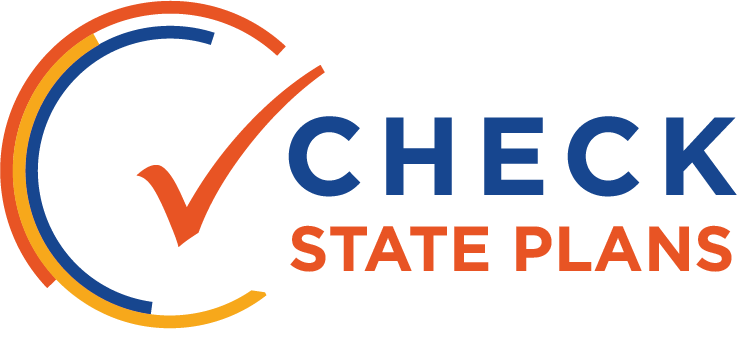
NEVADA
- Overview of Nevada's Plan
- Equity
- Strengths
- Improvements
- Coherent and Aligned Vision for Improving Outcomes
- Strategic Use of Funding and Alignment of Resources
- Rigorous Review Process
- Continuous Improvement, Monitoring and Evaluation
- Evidence-Based Interventions
- Capacity Building and Autonomy
- Engagement
- Sustainability
Promise to Practice Overview
Equity
Nevada does not explicitly call out increased equity and reduced achievement gaps as a goal in their school improvement materials, but it can be implied that some of their efforts and strategies could do so. The state lacks specifics on how they will address the needs of student subgroups when developing and implementing school improvement.
Strengths
The state’s competitive process for allocating funds for school improvement seems clear and rooted in both plan completeness and quality, not completeness alone. Nevada also has a strong school improvement application that includes sustainability and progress monitoring.
Improvements
Nevada could have a better state-level approach to support schools after they exit comprehensive or targeted status so they are not identified again. More explanation is also needed on how it will support schools who do not receive grant funding and the importance of parent and community engagement in school improvement efforts.
Coherent and Aligned Vision for Improving Outcomes:
Strategic Use of Funding and Alignment of Resources:
Rigorous Review Process:
Continuous Improvement, Monitoring and Evaluation:
Evidence-Based Interventions:
Capacity Building and Autonomy:
Engagement:
Sustainability:
Click through the tabs on the left to see how Nevada scored in each category.
Equity
How well does the state’s approach to school improvement include focused attention on supporting underserved students and closing the achievement gap? Does the state require LEAs to maintain an equity focus in their school improvement plans, activities and resource allocations?
Equity appears to be more of an implicit goal instead of explicit in Nevada’s theory of action and school improvement materials, specifically in reference to how the state addresses closing achievement gaps and making school improvement grants competitive in order to reach the schools with the most need. Ensuring students can access effective educators could also be linked more to equity. States should explicitly include equity as a goal of the school improvement process and be more specific about how they expect districts and schools to address the needs of subgroups of students when developing and implementing school improvement plans. States should also ensure that subgroup performance is considered for all indicators in their accountability systems and weighted appropriately to determine which schools are identified for improvement.
Strengths
How is the state thoughtfully leveraging ESSA’s flexibility to put in place the necessary policies and procedures that create an enabling environment for effective and sustained school improvement, and that consider state/local lessons learned from past efforts? What parts of the state’s turnaround strategy or guidance to LEAs were strongest or exemplary?
Nevada’s school improvement documents and resources are strong in several areas. The state’s competitive process for allocating funds for school improvement seems clear and rooted in both plan completeness and quality, not completeness alone. From the description in the state’s materials, the review process appears more than perfunctory. The school improvement application is also high quality, with a rubric that incorporates some often-sidelined aspects of ESSA implementation, including sustainability and progress monitoring. The expectation that districts and schools will set multi-year targets, aligned with ESSA exit criteria, will aid with both support and accountability roles at the state level.
Nevada’s theory of action includes clear and concise guidance of state expectations for districts and schools and specific statewide strategic focuses. The state’s support materials around evidence-based practices seems useful. In addition, the Achievement District option seems to be an appropriately-used high-touch strategy that will be potentially useful to learn from.
Improvements
How can the state improve its turnaround efforts? What parts of the state’s strategy or guidance to LEAs were unclear? What risks and challenges might the state face with its current approach?
While it prompts districts to think about sustainability, Nevada could do a better job having a state-level approach to support schools after they exit comprehensive or targeted status so they are not identified again. Nevada could also better explain how it will support schools that are not designated as comprehensive or targeted or do not receive funding as part of the grant competition but still need substantial support and assistance.
Nevada would do well to emphasize the importance of parent and community engagement in the school improvement grant application. It should also better explain how different programs (state and federal) can be leveraged to help with school improvement. The state should conduct a deeper review of prior practices to see which improvement strategies are still effective and viable under ESSA.
Coherent and Aligned Vision for Improving Outcomes
How well does the state articulate a coherent vision or theory of action that drives their school improvement efforts? Is this vision aligned with the state’s accountability system and goals for closing the achievement gap?

Nevada articulates a clear and concise vision for school improvement. Not only does the state’s theory of action name specific, high-priority outcomes that Nevada wants to achieve, it also describes specific actions for both the state and districts. For example, Nevada calls out a state role for differentiating funding based on student need, whereas it describes recruiting and retaining effective educators as a district role. Regarding outcomes, few states so far have been as specific as naming third grade reading proficiency as a desired outcome for example, and such clarity should benefit the field.
The state’s theory of action does not include equity as a focus, however. There are references to strategies that can be used to advance an equity agenda, such as recruiting and retaining excellent educators and engaging parents and communities. However, these strategies are not framed as a tool to advance equity in the theory of action. Doing so would make Nevada’s approach here exemplary.
Strategic Use of Funding and Alignment of Resources
Is the state allocating funding in a way that is strategic and maximizes resources? Are LEAs expected to prioritize improvement efforts that address the underlying performance issues?

Nevada runs a competitive grant program for both comprehensive and targeted schools that encourages districts to submit plans that are high quality, not just complete. The state’s school improvement application describes that funding will be awarded based upon strategic alignment to state priorities, need, the selection of evidence-based interventions based on ESSA’s tiers, and whether monitoring and evaluation components are included. Meanwhile, the application rubric and metrics are clear and include decent alignment to Nevada’s school improvement theory of action. For example, districts and schools review historical data and set targets for the next 5 years that are aligned to the state’s exit criteria.
The drop down boxes in the state’s application prompt districts to select the programs to which they are allocating resources against an overall goal, provides the opportunities for districts to be very deliberate and strategic, but also opens the possibility to think about how funds can be utilized creatively in different areas to address improvement needs. This seems to be a promising way to ensure that funding will go to the schools with the greatest need and commitment to school improvement.
Additional guidance to districts in how to strategically utilize funding from different sources to address the overall goal of school improvement could help reduce potential confusion for districts over how to or when they can use the various funding streams available to them. Additional information is needed to understand how the state will support districts who are not awarded competitive funds.
Rigorous Review Process
Is the state applying rigorous criteria and review processes to ensure resources will be used to support effective school improvement efforts? Is the state prioritizing funding to LEAs who demonstrate the greatest need for school improvement funding (including LEAs with a high percentage of CSI and TSI schools) and the strongest commitment to school improvement?

Nevada has a clear rubric that orients districts to effectively plan their school improvement efforts. For example, districts and schools must not only select achievement goals, but goals for each of the next five years in order to track progress over time. The state also expects timelines for implementation, a process for measuring process on 90-day cycles, and plans for sustainability. In all, Nevada’s rubric asks for a commendable level of detail from district and school plans. Combining this with the fact that the state will award funding competitively based on plan quality and level of need, it seems likely that Nevada will be able to focus on schools that demonstrate the greatest need and commitment to school improvement.
In the guidance documents, the state also includes some detail about the process through which applications will be scored, which is helpful to the field. From the description included there, it appears that more than one expert at the state will review each plan, which would be another strong practice.
The state’s rubric references Focus and Priority schools as needing support, therefore it was unclear to the peers the extent to which the rubric was updated to reflect current flexibilities under ESSA. While continuing to utilize processes that have resulted in successful school improvement is certainly a good practice, it is unclear how successful the school improvement processes were previously to support their continued use.
Continuous Improvement, Monitoring and Evaluation
Does the state have a robust, data-driven process to monitor LEAs’ implementation of the school improvement plans within their district? Did the state establish clear milestones to ensure improvement over time, and within four years?

Nevada has clear exit criteria, establishes annual reviews for comprehensive schools to review data and progress, and requires improvement plans to be carried out in three years via a performance contract with the state, including annual targets for five years. In addition, these targets must be aligned with exit criteria, which is uncommon among state requirements for district plans so far.
The state also describes clear, rigorous options for schools if they fail to improve, although there is concern over how different these interventions are from pre-ESSA interventions. Some attention should be paid about verification of self-reporting by districts, and it would be useful to know the extent to which Nevada’s ESSA-era more rigorous interventions are informed by lessons learned.
Evidence-Based Interventions
To what extent is the state mandating LEAs use evidence-based strategies in their improvement efforts? Does the state provide guidance and supports to LEAs to help them identify and implement the most effective strategies based upon their needs?

Nevada provides a list of approved evidenced-based practices, curricula, providers, programs materials and professional development for districts and schools to use. In its theory of action, the state says that one of its roles will be to “ensure alignment and effective use of existing and new programs and resources across the state,” which is encouraging. It will also assist schools in identifying appropriate interventions to meet school needs. The state will also help districts and schools implement those interventions through professional development and other supports.
It is not clear to what degree the state will be offering support to districts and schools in selecting evidence-based interventions. Nevada expects to see alignment between interventions and needs, but aside from providing a list of approved programs, other supports are not well described.
Capacity Building and Autonomy
How well does the state articulate, delineate or set parameters around which interventions and responsibilities belong to the state, LEA and/or school? Does the state provide support or guidance to help LEAs identify and reduce barriers to school improvement? Does the state have a framework or process to support and monitor outside entities who partner with the state, LEAs or schools in school improvement efforts?

In its theory of action, Nevada clearly delineates what the state, districts, and schools are responsible for in school improvement and allows for districts to have autonomy while maintaining accountability for them, providing assistance, and ensuring the use of evidence-based practices. The state has developed promising resources to guide for districts and schools to understand the school improvement process, such as it application rubric and evidence-based intervention list. The option for districts to join the state Achievement District is a high-touch and potentially effective approach, embracing some of the state level flexibilities assigned through ESSA. Nevada’s Achievement District is different than similar approaches in other states in that it is not made up of just districts assigned that designation.
From the documents provided, it is unclear exactly how external providers are monitored and evaluated on an ongoing basis, which keeps this category from an exemplary rating.
Engagement
Does the state require LEAs to engage with stakeholders such as parents and community members in the development and implementation of their school improvement plans? Does the state provide sufficient guidance and resources to LEAs to effectively do so, helping them foster local buy-in and promote sustainability?

Engagement is specified in Nevada’s ESSA plan, guidance, and in the District Performance Plan template. While the state has indicated that some level of stakeholder engagement is required, the expectation described in the state’s application is thin. It is unclear if level of engagement required is enough on an ongoing basis to shift the status quo or if parent and community involvement is included as a part of regular stakeholder engagement efforts. The theory of action indicates that districts and schools will communicate information about the designation and plan process, but it is unclear if the stakeholder engagement is a two-way dialogue that helps develop the plan.
Engagement
Does the state have a plan in place to review the school improvement efforts statewide and evaluate the impact and effectiveness? Does the state have a process in place to support LEAs and schools by enhancing their capacity to maintain their improvement efforts upon exiting identification and intervention?

Nevada’s approach to school improvement goes well beyond simply meeting the minimal requirements of ESSA respect to monitoring, supports, and evidence based practices. It is unclear if the supports in place will enhance the capacity to avoid repeated re-designation once they exit comprehensive or targeted designation. Nevertheless, Nevada’s school improvement application does prompt districts and school to be forward-thinking about sustainability.
The state’s use of the Achievement District may be able to help move the needle, but it is not yet clear what Nevada intends to do with these processes if expected outcomes are not reached.
- Overview of Nevada's Plan
- Goals
- Standards and Assessments
- Indicators
- Academic Progress
- All Students
- Identifying Schools
- Supporting Schools
- Exiting Improvement Status
- Continuous Improvement
 Overview
Overview
Strengths
- Nevada has built its accountability system on high-quality standards and assessments that are aligned to college and careers, and the state’s accountability framework is based on ambitious goals and interim targets.
- The system is also attempting to strike a balance between student proficiency and growth over time, and has embedded both priorities into its school-rating system.
- Nevada’s use of chronic absenteeism, school climate, and the completion of individual learning plans to measure student engagement broadens the accountability system and will present a more holistic view of school success.
- Nevada also has laid out a set of promising criteria to identify consistently underperforming subgroups, and its exit criteria for low-performing schools are clear, ambitious, and aligned to the state’s long-term vision for improvement.
- Finally, the state’s plan for supporting low-performing schools will leverage competitive grants to encourage districts toward more rigorous turnaround strategies, will utilize its achievement school district to serve those schools that fail to improve, and will prioritize the importance of additional staff members in the schools who are critical to ensuring that struggling students are well-supported.
Weaknesses
- There is a risk that Nevada’s list of 17 potential measures may be too cumbersome, and each individual indicator may lose relevance. Furthermore, this approach may create unnecessary confusion for school leaders about what to focus on.
- Nevada does not include disaggregated subgroup performance in its five-star school-rating system. Instead, Nevada has created a back-end check to identify schools with consistently underperforming subgroups.
- The state also does not provide data on how many schools might be captured using its proposed definition. Nevada should monitor its data to ensure this rule serves its purpose and identifies schools with low-performing subgroups.
- With respect to school improvement, Nevada’s plan could be strengthened by providing additional details on how the list of evidence-based supports will be developed and clarifying the responsibilities of the state, districts, and charter schools.
Click through the tabs on the left to see how Nevada scored in each category.
GOALS
Nevada expects faster progress for groups of students whose current performance is starting out lower.
The state proposes six-year long-term goals and, at the end of that time period, plans to revisit the goals and establish new targets for all students to reach by 2030. The state has benchmarked its 2022 goal and interim targets on the fastest-improving states in the country, which is an ambitious and achievable target. Similarly, Nevada has seen strong graduation rate gains in recent years, and it aims to continue that progress by boosting its rates another 10 percentage points, on average, by 2022.
Nevada set an ambitious long-term goal of 90 percent for English learner proficiency.
The use of students’ initial English proficiency level and time in language instruction programs is consistent with research on language acquisition.
STANDARDS AND ASSESSMENTS

Nevada has built its accountability system on high-quality standards and assessments that are aligned to college and careers.
The state uses the Common Core State Standards and Smarter Balanced assessments in grades 3-8, and in high school it uses end-of-course exams, which help ensure that students are assessed on the full range of high school standards.
Nevada has taken steps to address low performance and graduation rate for students with disabilities.
Nevada recently passed legislation offering more robust post-secondary opportunities to students with disabilities and limiting the number of students assessed using the state’s alternate assessment.
INDICATORS
Nevada’s plan includes a variety of indicators that represent a holistic view of school success.
The state’s use of its long-term goals and interim targets within the achievement and graduation rate indicators clearly links the targets to a school’s overall rating. Nevada’s use of chronic absenteeism, school climate, and the completion of individual learning plans to measure student engagement broadens the accountability system while still employing rigorous, student-focused measures.
Nevada’s plan does not always provide detailed information on the definition of each indicator and how each indicator is calculated.
Several of the indicators include subcomponents with no guidance on the way they will be combined into one larger indicator. For example, a student engagement measure includes both chronic absenteeism and a school climate survey, but the plan does not specify how they would be combined.
The state could strengthen its plan by assigning greater weight to the four-year graduation rate, while still recognizing the value of an extended-year graduation rate.
ACADEMIC PROGRESS
Nevada is proposing to weight proficiency and growth, combined, at 60 percent of a school’s overall grade.
Nevada has placed a significant emphasis on growth, giving it a weight of 35 percent, compared with 25 percent for proficiency. This balance will drive attention to both, with a greater emphasis on growth than static proficiency.
Nevada is planning to incorporate two complementary growth measures.
One of the measures tracks student progress toward state standards, and the other one that compares students with their similarly performing peers. However, the state does not say how it will combine these two growth measures into one larger “Academic Progress” indicator.
ALL STUDENTS
Nevada does not include specific weights for student subgroups in the state’s five-star school-rating system.
However, Nevada has created a back-end check to identify schools with consistently underperforming subgroups. Any school that failed to reduce the number of nonproficient students by at least 10 percent over the previous year will be identified for targeted support and improvement. This could be a promising approach, especially because it is focused on proficiency rates for low-performing subgroups, but Nevada does not provide data on how many schools might be captured using this definition.
Nevada keeps its minimum threshold for including subgroups in its star rating system at 10 students.
However, when the state identifies targeted support schools based on subgroup performance, it plans to instead use an n-size of 25. This inconsistency is problematic and could result in students in smaller schools not receiving the resources and support they need. More data would be helpful to understand the implications of Nevada’s proposals.
The state will be weighting English-language proficiency at 10 percent.
This will help shine a light on schools that are not serving English learners well and will lead to greater supports for English language acquisition.
However, the inclusion of English-learner students for up to four years after they cease to receive English learner services could mask the performance of those still receiving services. Since exiting students tend to have higher performance, the state should monitor its data to ensure it is not masking the performance of students who are still receiving services.
IDENTIFYING SCHOOLS
Nevada clearly links its star rating system and its school-identification system.
Nevada plans to identify all of its one-star schools and all downward-trending two-star schools, as well as the bottom 5 percent of schools, as schools in need of comprehensive support. However, the plan does not have similar alignment for schools with low-performing subgroups, and there’s uncertainty about the state’s proposed rules to identify schools in need of targeted support. Similarly, the state could provide greater clarity around its definition for schools identified for “additional targeted support.”
Nevada will give a label of “not rated” to any school that exclusively serves students with disabilities.
The state indicates it has an alternative performance framework that applies to these schools, but it’s potentially problematic if the systems are not well aligned, especially if it creates incentives for students with disabilities to be sent out of traditional schools.
Nevada emphasizes the importance of state assessments by including a school’s participation rate in its accountability system.
However, the state could strengthen its plan by imposing consequences for missing this target sooner than in the proposed timeline of three consecutive years. In addition, Nevada should consider monitoring participation rates going forward to ensure low-performing students are not inappropriately excluded from the assessment system.
SUPPORTING SCHOOLS
Nevada plans to create a competitive grant for its school-improvement fund and differentiate tiers of improvement.
In addition, Nevada’s ultimate consequence for continually failing schools is to place them into the Nevada Achievement School District – an appropriately aggressive step that provides a strong backstop against continued low performance.
Nevada is maximizing its 7 percent set-aside for school improvement efforts through a competitive process.
The process will prioritize strong evidence-based strategies, particularly in the state’s priority areas of turning around the lowest-performing schools, developing strong leadership teams, and analyzing data for decision-making.
Nevada could align more of its resources to strengthen its plan.
Nevada could do more to align its support and improvement strategies in schools identified for targeted support and improvement to raise the achievement of the particular low-performing subgroup of students that led to the school’s identification. Moreover, Nevada could strengthen its plan by further aligning its periodic resource reviews for districts serving a significant number or percentage of identified schools with schools’ needs analyses and improvement plans. It would also be helpful for the state to clarify the responsibilities at various levels — state, district, school, charter authorizer.
Exiting Improvement Status
Nevada’s exit criteria are generally strong and clear.
Reaching a three-star rating to exit comprehensive support status is rigorous. However, the state may want to consider ongoing monitoring of these schools to ensure that they do not immediately fall back into one- or two-star status.
The exit criteria for targeted support and improvement schools are also rigorous.
It requires schools to meet their interim targets or reduce nonproficiency rates of the specific low-performing subgroup by 10 percent for two consecutive years. These targets are specific, tailored to individual schools, and linked directly to the reason the school was identified for improvement in the first place. Again, Nevada may want to monitor exited schools to make sure that they sustain this improvement, but these exit criteria present a potential model for other states.
Continuous Improvement
Nevada has set goals for 2022 and will revisit them to set new ones in 2030.
Nevada should articulate how it intends to continuously evaluate and update its plan and modify its improvement strategies over time. Nevada could also explain how it will evaluate ongoing implementation efforts of its plan, as well as how it will consult with key stakeholders as the state revises its improvement strategies.
Nevada also plans to support a “Ready Network” to help share best practices and a data literacy campaign to help its educators read and interpret the state’s school rating system, provide parents with more transparent information, and engage periodically with the state’s Special Education Advisory Council.






